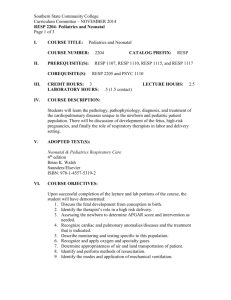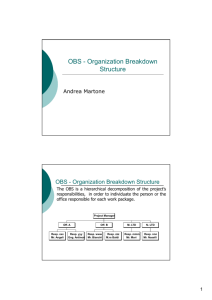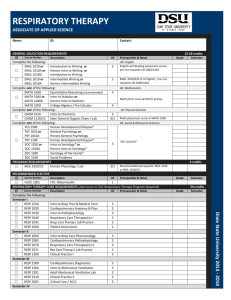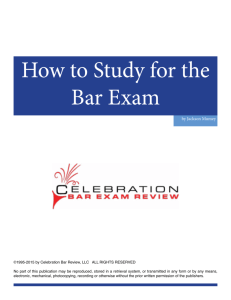Supplementary material 1. Mathematical formulation and
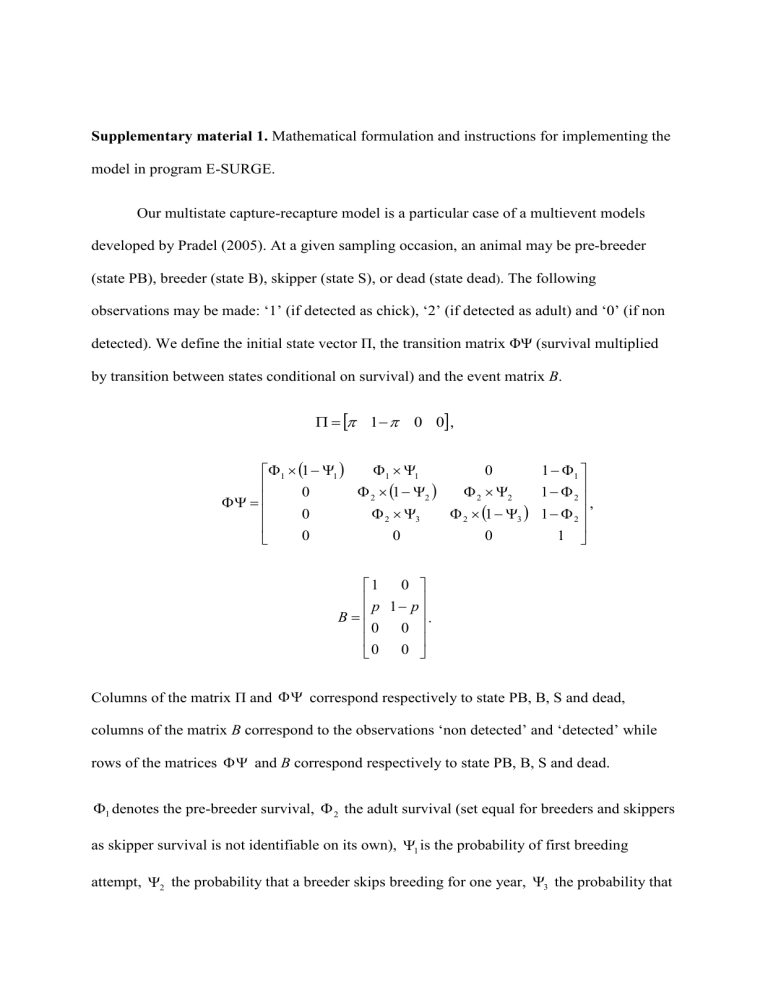
Supplementary material 1.
Mathematical formulation and instructions for implementing the model in program E-SURGE.
Our multistate capture-recapture model is a particular case of a multievent models developed by Pradel (2005). At a given sampling occasion, an animal may be pre-breeder
(state PB), breeder (state B), skipper (state S), or dead (state dead ) . The following observations may be made: ‘1’ (if detected as chick), ‘2’ (if detected as adult) and ‘0’ (if non detected). We define the initial state vector Π, the transition matrix ΦΨ (survival multiplied by transition between states conditional on survival) and the event matrix B .
1
0 0
,
1
1
1
0
0
0
2
1
1
1
2
2
3
0
0
2
2
1
2
3
0
1
1
1
1
2
2
1
,
B
1 p
0
0
1
0
0
0 p
.
Columns of the matrix Π and
correspond respectively to state PB, B, S and dead, columns of the matrix B correspond to the observations ‘non detected’ and ‘detected’ while rows of the matrices
and B correspond respectively to state PB, B, S and dead.
1 denotes the pre-breeder survival,
2 the adult survival (set equal for breeders and skippers as skipper survival is not identifiable on its own),
1 is the probability of first breeding attempt,
2
the probability that a breeder skips breeding for one year,
the probability that
3
a skipper returns to the colony (without distinction between one-year and multiple-year skippers) and p is the detection probability.
Individuals are first captured as PB (group 1) or B (group 2); π (resp. 1− π) denotes the proportion of newly marked in state PB (resp. state B). Φ
1
×Ψ
1
(resp. Φ
PB
×(1−Ψ
1
)) represents the probability that a pre-breeder survives and attempts breeding (resp. survives and stays in state PB). For an individual in state B, Φ
2
×Ψ
2
(resp. Φ
2
×(1−Ψ
2
) ) represents the probability that a breeder survives and skips breeding the year after (resp. survives and attempts breeding the year after). For an individual in state S, Φ
2
×Ψ
3
(resp. Φ
2
×(1−Ψ
3
)) represents the probability that a skipper survives and returns to the colony the following year (resp. survives and skips breeding one more year). After the first capture, pre-breeders are not observed as they do not attend the colony; skippers are never observed as they do not attend the colony; we estimate breeders detection probability as they attempt the colony to breed.
Multistate models (see Lebreton et al. 2009 for a recent review) can be implemented in program E-SURGE (Choquet et al. 2009) which is freely downloadable at http://www.cefe.cnrs.fr/biom/En/softwares.htm
. The first step is to load the data into the program and specify the number of groups (2 here, individuals first captured as PB and B), states (4 here), events (2 here), age classes (19 here) and covariates (age and age^2 here).
Then, the model specification procedure is decomposed into i) implementing the basic structural form of the matrices using the GEPAT interface, ii) setting linear model of each parameter using the GEMACO interface and iii) fixing initial parameters using IVFV interface .
In the GEPAT module in E-SURGE, ‘*’ entries denote the complement of the sum of positive row entries, and ‘-’ entries denote zeroes. For the initial states vector, the transition
(decomposed in two matrices, Φ gathering survival probabilities and Ψ gathering probabilities of transition between states) and event matrices introduced above, we have:
*
,
*
*
*
*
,
*
*
*
*
,
B
* p
*
In the GEMACO interface (Choquet 2008), predefined shortcuts are used to specify which parameters are time-constant, time-specific or state-specific (e.g. ‘i’ denotes constancy,
‘t’ means time effect, ‘a’ denotes an age effect, ‘g’ denotes a group effect, ‘x’ denotes a covariate effect, and ‘from’ means that parameters are not equal in each matrix row). For the best model, we used ‘i’ for initial parameters and ‘from(1).t+from(2:3).i’ for survival probabilities –Φ
1
time-dependant and Φ
2 constant–,
‘from(1).[i+a*x(1,2)].t+from(2).t+from(3).i’ for transitions – Ψ
1 has a quadratic effect of age interacting with time, Ψ
2
is time-dependent and Ψ
3 constant–. For the events, we distinguished the first from the following encounter occasions because the encounter history is conditional on being caught in the first period and the following detection probabilities depend on the
group, the state and the time occasions. Hence, the formulation for the event is
‘from(1).a(1).g(1)+from(2).a(1).g(2)+from(1).a(2:20)+from(2).a(2:20).t’.
In the IVFV interface, when specifying initial parameter values, one should then constrain the first beta value associated with the first detection for PB to 1 –
‘from(1).a(1).g(1)’ –, the second beta value associated with the first detection for B to 1 –
‘from(2).a(1).g(2)’ –, the third beta value associated with the detection of PB after the first capture to 0 – ‘from(1).a(2:20)’ –before running the model.
References
Choquet R. 2008. Automatic generation of multistate capture recapture models. The Canadian
Journal of Statistics 36 , 43-57.
Choquet, R., L. Rouan, and R. Pradel. 2009. Program E-SURGE: a software application for fitting multievent models. Pages 845–865 in D. L. Thomson, E. G. Cooch, and M. J.
Conroy, editors. Modeling Demographic Processes in Marked Populations, Vol. 3.
Springer Series: Environmental and Ecological Statistics, New York.
Lebreton, J. D., Nichols, J. D., Barker, R. J., Pradel, R. & Spendelow, J. 2009 Modeling
Individual Animal Histories with Multistate Capture–Recapture Models. Advances in
Ecological Research 41 , 87-173
Pradel, R. 2005 Multievent: An Extension of Multistate Capture–Recapture Models to
Uncertain States. Biometrics 61 , 442–447.
